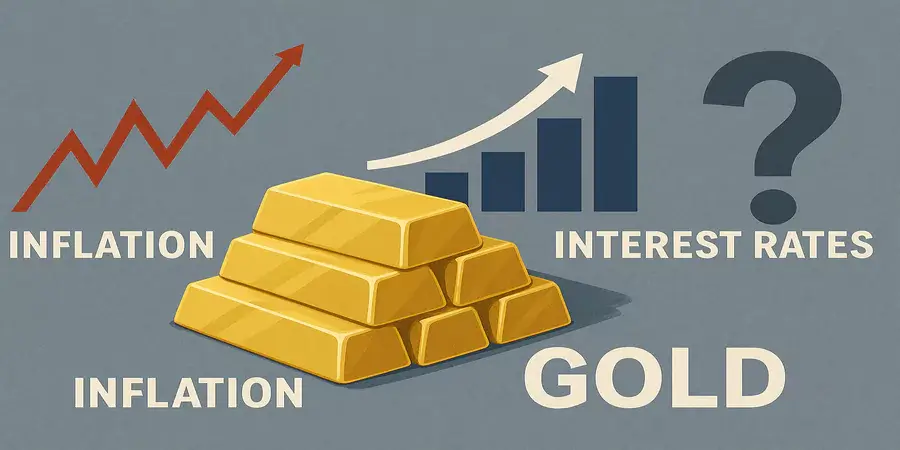Gold remains a trusted financial asset, valued for its stability and long-term reliability. Its appeal grows during economic shifts, especially with rising inflation, changing interest rates, or global uncertainty. Understanding these factors helps guide more effective market participation. It continues to play a key role in diversified financial strategies.
The Connection Between Inflation and Gold
As inflation rises, currency value declines, making goods and services more expensive. Gold attracts attention in these times for its ability to preserve value better than paper money. This quality has been observed repeatedly throughout history, making it a central focus in gold trading during inflationary periods. When prices rise across the board, investors and institutions alike shift focus toward gold.
The metal’s limited supply and historical role as a store of value reinforce its reputation during inflationary periods. As purchasing power weakens, gold becomes a reliable way to maintain financial balance. This connection has played out many times. During the 1970s, for example, inflation soared while gold prices moved upward in response. The same trend is often seen whenever inflation expectations grow. Even the anticipation of higher inflation can prompt increased demand for gold.
Gold and Interest Rate Movements
Interest rates play a key role across financial markets, and precious metals are no exception. While these assets don’t offer interest or dividends, their value often increases when rates remain low. In such conditions, traditional savings and fixed-income investments become less appealing, making metals like this a stronger option for value preservation.
When central banks lower rates or when inflation outpaces interest rate growth, interest tends to rise. These shifts can also impact currency values, with weaker currencies typically boosting prices. Staying informed about rate trends allows traders to make more timely and informed decisions.
The Role of Uncertainty in Gold Demand
This asset has long been viewed as a dependable option during periods of economic and political change. Its steady demand during uncertain times is one reason it remains central in global financial strategies.
When headlines signal instability, interest often rises. It offers reliability, making it a preferred choice during market transitions. Recent years reflect this trend. In early 2020, prices rose as global conditions shifted, reinforcing its role as a steady and respected asset.
How Gold Markets Work in Modern Times
Trading has evolved with the development of modern platforms and tools, allowing easy access. There are various ways to engage depending on individual preferences and goals.
Popular options include:
- Spot transactions for immediate pricing
- Futures contracts that lock in a price for a later date
- Exchange-Traded Funds (ETFs) for exposure through public exchanges
- Derivatives like CFDs for price-focused strategies
These options offer flexibility and access to global markets. Many participants use a mix of these instruments depending on whether the goal is short-term responsiveness or long-term asset holding. Access is now quicker and more efficient, with tools across platforms supporting broader participation and smarter decisions.
Strategic Approaches in the Gold Market
A deeper understanding of economic conditions helps support more confident decision-making. Three key areas provide a strong foundation for market awareness: inflation indicators, interest rate changes, and global developments. These elements shape demand and pricing, offering valuable signals to watch.
- Inflation data: Monitoring indicators like the Consumer Price Index helps track purchasing power trends.
- Central bank decisions: Policy statements often guide expectations for currency strength and interest rates.
- Global developments: Staying informed about international news helps anticipate shifts in demand.
Traders and analysts often align their approaches with these factors to make the most of gold’s responsiveness. Combining economic insights with market tools makes strategy planning both practical and focused.
Predictive charts, trend indicators, and economic calendars are widely used in today’s trading approach. These resources allow better timing and refined strategies when engaging with gold markets.
Seamless Gold Access Through Online Platforms
Technology has made market participation smoother and more intuitive. Online platforms now offer real-time data, expert insights, and interactive tools that simplify the process. These services are built to match various experience levels, enabling seamless involvement and consistent market tracking. With mobile apps, customisable dashboards, and educational content, traders can follow gold markets in real time.
Many platforms also include simulated trading environments, which are ideal for refining strategies and gaining familiarity with market movements. This streamlined access ensures that gold remains not only a reliable asset but also an easily managed one. The convenience of digital trading has contributed to the growing interest in gold across both individual and institutional segments.
Gold’s behavior is closely tied to broader economic signals. When inflation rises, interest rates shift, or uncertainty grows, gold tends to respond with increased strength. These connections make it an appealing part of diverse financial approaches. For those involved in gold trading, recognising the influence of inflation, rate decisions, and global developments can guide more effective decisions. With the right tools and understanding, gold continues to be a valuable and accessible opportunity across market conditions.
















